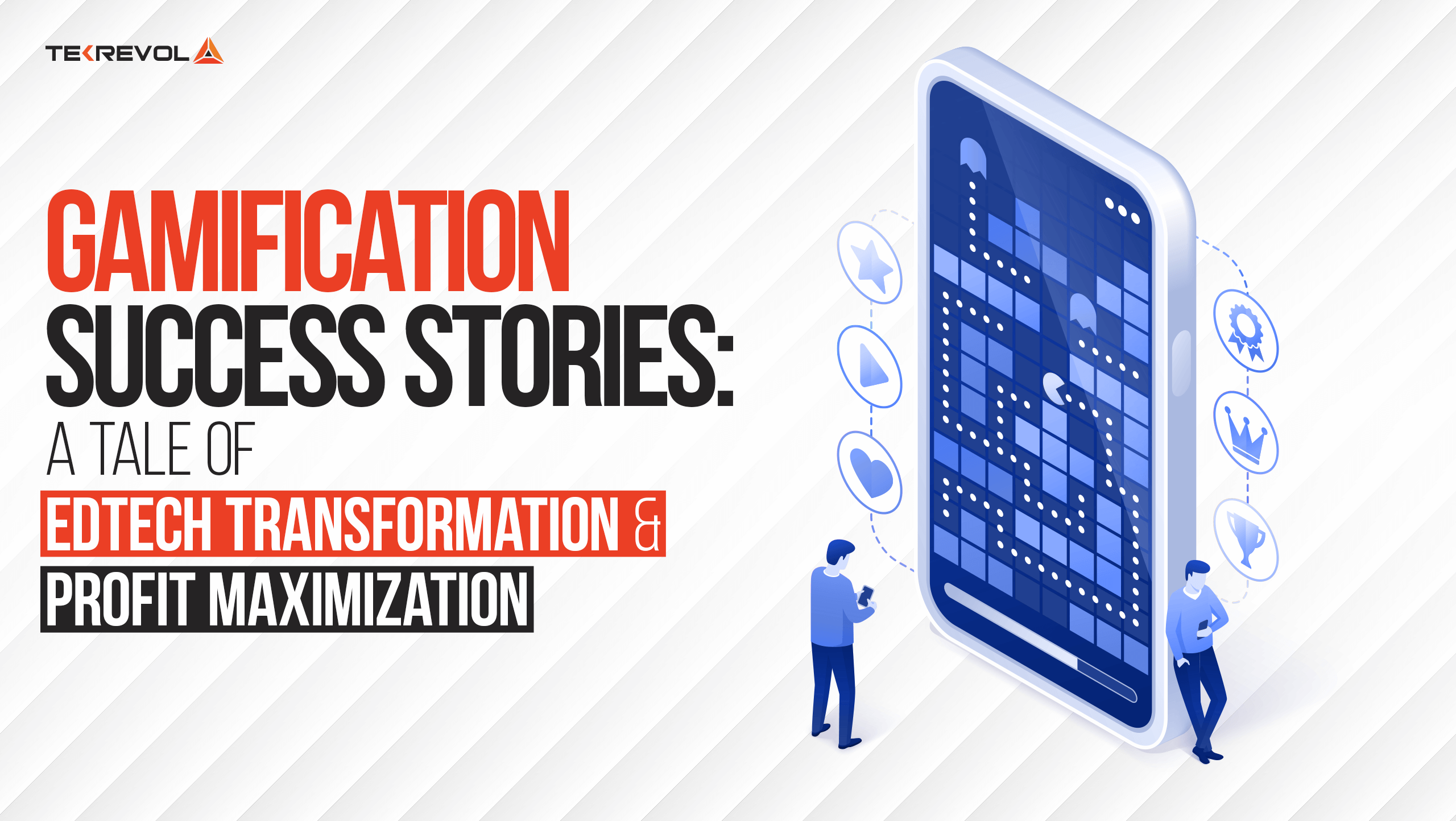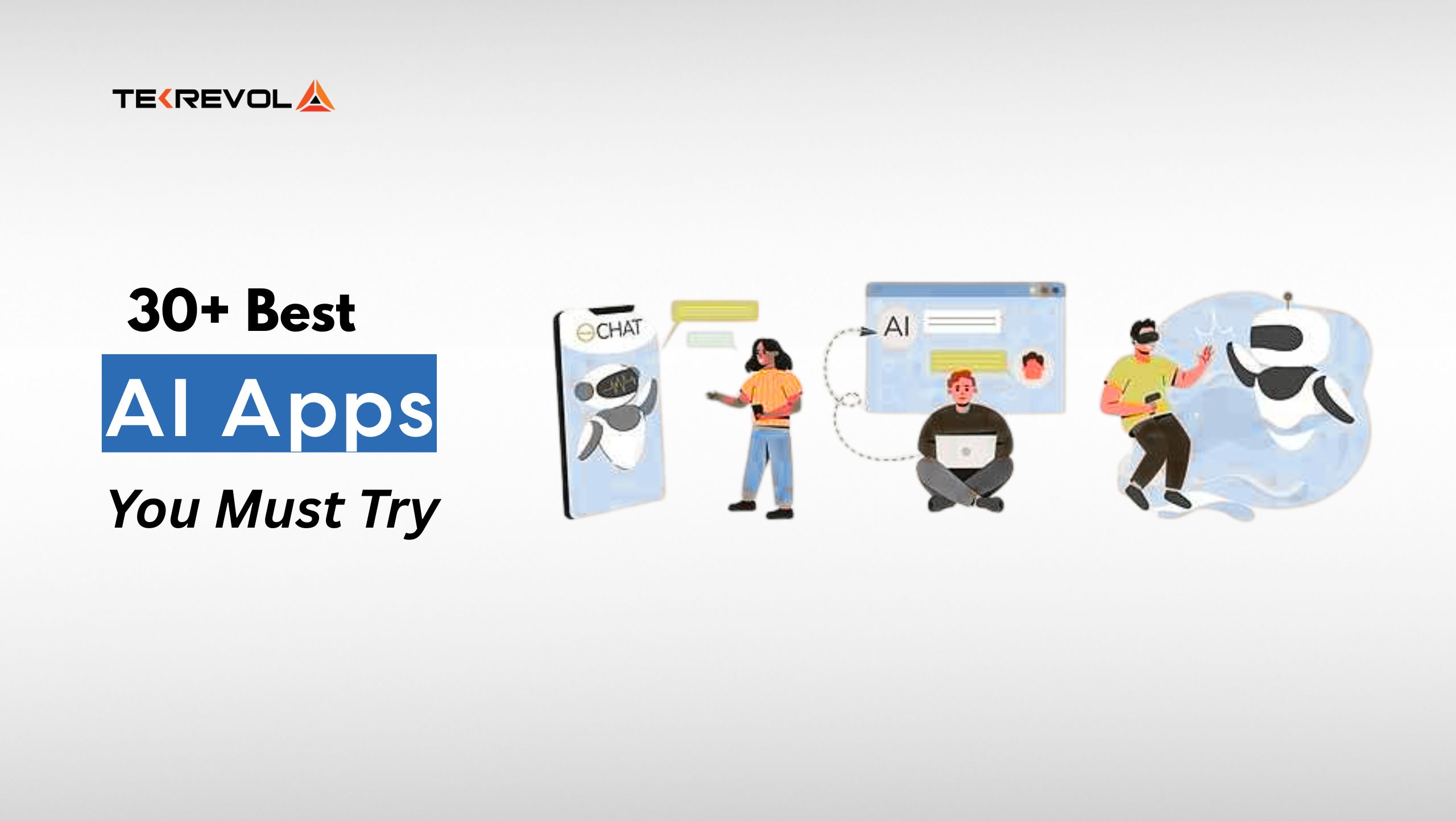Thriving in today’s competitive eCommerce landscape requires more than just offering an online storefront. With new technologies constantly emerging, staying ahead of the curve is crucial to meet the ever-evolving needs of your customers.
As an online business owner, it’s essential to stay nimble and adaptable to ensure that you are leveraging the latest tech trends to optimize your eCommerce mobile app’s performance and user experience. By embracing these cutting-edge technologies and catering to your customer’s needs, you can establish a winning formula for eCommerce success.
With the rise of online shopping, eCommerce sales are skyrocketing at an unprecedented pace, promising immense growth opportunities for businesses. This is also enhancing ecommerce app development services. In fact, the US eCommerce market is projected to cross the $900 billion mark in 2022, and is expected to double to $1.7 trillion by 2027.

This impressive surge is driven by a variety of factors, including the convenience and accessibility of online shopping, the proliferation of mobile devices, and the adoption of emerging technologies like AI and machine learning. As these trends continue to shape the eCommerce landscape, businesses that can effectively tap into this growing market will stand to reap enormous benefits.
Ecommerce App Development – A Brief Sneak Peek into Strategies and Best Practices
In today’s digital era, eCommerce app development has become an essential aspect of running a successful online business. To create an eCommerce app that engages and converts customers, it’s important to adopt the right strategies and best practices.

Firstly, it’s crucial to identify your target audience and tailor your app’s design and features to their needs and preferences. Secondly, optimize your app’s performance by leveraging cutting-edge technologies like AI and machine learning to improve search algorithms, personalization, and recommendation engines.
Additionally, it’s important to ensure that your app is secure, user-friendly, and fast-loading. This can be achieved through rigorous testing and optimization, as well as adopting best practices such as responsive design, streamlined checkout process, and intuitive navigation.
Thriving in the fast-paced world of online retail requires staying ahead of the curve and understanding your customers’ evolving needs. At TekRevol, we’ve honed our eCommerce application development expertise to deliver successful products like ArrowRecovery. Whether you’re looking to adopt the latest trends or revolutionize your eCommerce strategy, our team is excited to share our knowledge and help you stay competitive in today’s ever-changing marketplace.
- Ready to Get your eCommerce App Developed?
- Get eCommerce app development services to enhance your business reach with TekRevol
How Ecommerce Technologies are Shaping the Future of Sales
With the emergence of new eCommerce technologies, online retail has never been more convenient or accessible. From one-click checkout to personalized recommendations, these advancements are transforming the shopping experience and driving the growth of the eCommerce sector.
It’s no wonder that the industry is projected to soar to almost $13 trillion in the 2022-2027 period, fueled by the increasing demand for seamless online shopping experiences. By embracing these cutting-edge technologies, businesses can unlock a world of possibilities and tap into the tremendous potential of the eCommerce landscape.

The world of B2B eCommerce is experiencing explosive growth, with sales projected to skyrocket from $1.9 trillion in 2023 to $2.4 trillion in 2025 in the US alone as per Insider Intelligence. As online stores continue to proliferate – there are already over 12 million eCommerce websites worldwide – customer expectations are also on the rise.
To stay ahead of the game, businesses must embrace cutting-edge technologies, optimize their digital presence, and deliver seamless online experiences that meet and exceed their customers’ evolving needs. With so much potential for growth and innovation in the B2B eCommerce space, now is the time for businesses to invest in their digital future.
Customers expect innovation in both online and traditional stores. Although many still visit physical stores, they are increasingly comfortable shopping online. To determine which technologies are worth investing in, let’s examine the trends already transforming the industry.
Top Ecommerce Technology Trends to Watch for in Future
The future of eCommerce is promising, but it’s essential to choose the right direction to achieve success. To help you navigate this exciting terrain, we’re here to share the latest trends shaping the eCommerce landscape and guide you towards a brighter digital future.

In recent years, eCommerce has experienced explosive growth. With the pandemic accelerating the shift to online shopping, it’s no surprise that the eCommerce industry is expected to grow by almost $13 trillion in the 2022-2027 period. To stay ahead of the curve, it’s essential for businesses to keep a pulse on the latest trends shaping the industry. Here are the top eCommerce technology trends to watch for in the future:
Artificial Intelligence (AI)
AI has already made significant strides in eCommerce, from personalized recommendations to chatbots that provide customer support. In the future, AI will become even more integrated into the online shopping experience. For example, AI-powered product search will enable customers to find the products they’re looking for more easily, while AI-powered pricing will allow for dynamic pricing that adjusts in real-time based on customer behavior and demand.
Augmented Reality (AR)
AR technology has the potential to revolutionize online shopping by enabling customers to visualize products in their own environment. For example, a customer could use AR to see how a piece of furniture would look in their living room before making a purchase. This technology is already being used by companies like IKEA and Wayfair, and it’s only expected to become more prevalent in the future.
Mobile Commerce (mCommerce)
Mobile devices continue to play an increasingly important role in eCommerce. In fact, it’s estimated that by 2025, mCommerce will account for 72.9% of all eCommerce sales. To capitalize on this trend, businesses need to ensure that their websites are optimized for mobile devices and that their mobile apps provide a seamless shopping experience.
Voice Commerce
With the rise of smart speakers and virtual assistants like Alexa and Google Assistant, voice commerce is quickly gaining momentum. In the future, customers will be able to use their voice to search for products, place orders, and make payments. To prepare for this trend, businesses need to ensure that their websites and apps are voice-enabled and that their product descriptions are optimized for voice search.
Subscription Services
Subscription services have exploded in popularity in recent years, and this trend is expected to continue in the future. From meal kits to beauty boxes, consumers are increasingly opting for the convenience and personalization that subscription services provide. To capitalize on this trend, businesses should consider offering subscription options for their products and services.
Social Commerce
Social media platforms like Facebook and Instagram are becoming increasingly important for eCommerce. In the future, social commerce will enable customers to purchase products directly from social media platforms, without ever leaving the app. To take advantage of this trend, businesses should ensure that their social media profiles are optimized for sales and that they have a seamless integration with their eCommerce platforms. One of the benefits of social commerce is the ability to leverage user-generated content, such as photos, reviews, and videos, to drive sales. This will result in the increase of their brand awareness and credibility, along with driving more sales.
Livestream Commerce
Livestream commerce is an eCommerce trend where a host showcases products in real-time and viewers can buy them directly on the platform. It’s popular in China, with over 300 million users watching live sessions during the Global Shopping Festival on Taobao. US companies are also adopting this approach to create urgency with limited-time offers, answer audience questions in real-time, and showcase products in dynamic ways.
Buy Now, Pay Later (BNPL)
Buy now, pay later” is a service that permits clients to acquire goods in interest-free payments. This service has become increasingly popular, especially during the pandemic, as people needed more flexible payment options. BNPL offers an alternative funding source for customers who prefer not to use their credit cards. It’s a growing trend in eCommerce, and experts predict that it could reach $680 billion worldwide by 2025.
AI Content Creation
AI-based content creation is a significant eCommerce tech trend for 2025 and future. While we are familiar with AI’s ability to personalize the shopping experience, there is much more that can be accomplished with this technology. Artificial intelligence will be instrumental in automating and scaling content creation and brand marketing. This technology can be useful for visual design, advertising campaigns, content marketing, and other relevant services.
- Start your eCommerce App Development Journey Today
- Connect with us to learn about eCommerce application development at TekRevol
Up-and-Coming Technology Trends in Ecommerce Security

With eCommerce becoming increasingly popular, the need for secure online transactions has become more important than ever. Security breaches can not only result in financial loss for businesses, but it can also result in the loss of customers’ trust, which can be devastating for any eCommerce store. As a result, businesses are constantly searching for new and innovative ways to secure their eCommerce platforms.
Blockchain Technology
Blockchain technology has gained a lot of attention in recent years and is now being used in various industries, including eCommerce. The blockchain technology is a decentralized and distributed ledger that records transactions in a tamper-proof and secure manner.
It allows for secure transactions without the need for intermediaries such as banks. eCommerce businesses can use blockchain technology to securely record and track transactions, protect customer data, and prevent fraudulent activities. Following are some up-and-coming technology trends in eCommerce security.
Biometric Authentication
Biometric authentication is a method of verifying a user’s identity using their unique physical characteristics such as fingerprints, facial recognition, and voice recognition. Biometric authentication is more secure than traditional authentication methods such as passwords, which can be easily compromised. eCommerce businesses can use biometric authentication to ensure that only authorized users can access their platforms and prevent unauthorized access to customer data.
Artificial Intelligence (AI) and Machine Learning (ML)
Artificial Intelligence (AI) and Machine Learning (ML) are being used in various industries, including eCommerce, to enhance security measures. AI and ML can analyze large amounts of data and detect patterns that can indicate fraudulent activities. eCommerce businesses can use AI and ML to identify potential security threats, prevent fraudulent activities, and protect customer data.
Chatbots
Chatbots are being used by eCommerce businesses to provide personalized customer service and support. They can also be used to enhance security by verifying user identities and detecting potential security threats. Chatbots can be programmed to ask security questions to ensure that only authorized users are accessing the platform.
Cybersecurity Insurance
Cybersecurity insurance is a type of insurance that protects businesses from financial losses resulting from cyberattacks. It covers the costs of recovering lost data, legal fees, and other expenses associated with a cyberattack. eCommerce businesses can purchase cybersecurity insurance to protect themselves from financial losses resulting from security breaches.
Ecommerce businesses should stay up-to-date with the latest technology trends in eCommerce security to protect their platforms and customer data. The above-mentioned technology trends are just a few of the many innovative solutions that businesses can use to enhance security measures. By implementing these technologies, eCommerce businesses can ensure that their platforms are secure and that their customers’ trust is maintained.
Ecommerce Trends by Industry for 2025
All areas of eCommerce, including beauty, food, and retail, are influenced by technology. Let’s examine the list of technologies and trends in eCommerce that apply to each industry.

B2B eCommerce: B2B eCommerce is expected to continue to grow in popularity in 2025. More businesses are expected to move their procurement processes online, and eCommerce platforms will need to accommodate complex business-to-business transactions. In addition, personalization, automation, and data analytics are expected to be key trends in B2B eCommerce.
Beauty eCommerce: Beauty eCommerce is expected to see continued growth, with more customers purchasing beauty products online. Personalization and augmented reality are expected to be key trends in beauty eCommerce, allowing customers to see how products will look on them before making a purchase. Sustainable beauty products are also expected to be in high demand.
Food eCommerce: Food eCommerce is expected to see significant growth in 2025, as more customers turn to online shopping for groceries. In addition, meal delivery services and meal kit subscriptions are expected to become more popular. Online grocery stores will need to provide high-quality product images, detailed product descriptions, and reliable delivery services to compete.
Fashion eCommerce: Fashion eCommerce is expected to continue to grow in popularity, with more customers purchasing clothing and accessories online. Personalization, sustainability, and social media marketing are expected to be key trends in fashion eCommerce. Online fashion stores will need to provide detailed sizing information, high-quality product images, and easy returns to attract and retain customers.
Concluding Thoughts on the Future of Ecommerce Apps Emerging Technologies
Ecommerce is booming, and the opportunities for investment are endless. With online shopping on the rise, now is the perfect time to capitalize on this rapidly expanding industry.
From social and livestream commerce to mobile shopping and AI-powered personalization, there are many exciting eCommerce technologies to explore. Don’t miss out on the latest trends like BOPIS, BNPL, and AI-content creation, which are revolutionizing the online shopping experience.
Take your eCommerce to next level with us. Whether you’re looking to implement the latest trends into your ecommerce app, or casually browsing to learn how to build an ecommerce app from scratch, TekRevol has got you covered.
Don’t let your online store fall behind – get in touch today and let us help you elevate your eCommerce experience!
- Want to Venture into the World of Ecommerce App Development?
- Connect with us to learn about eCommerce application development at TekRevol

 3289 Views
3289 Views May 30, 2025
May 30, 2025



![Wearable App Development for Android and iOS [2025 Guide]](https://d3r5yd0374231.cloudfront.net/images-tek/uploads/2023/09/Ultimate-Wearable-App-Development-Guide-for-Android-and-Apple.png)





